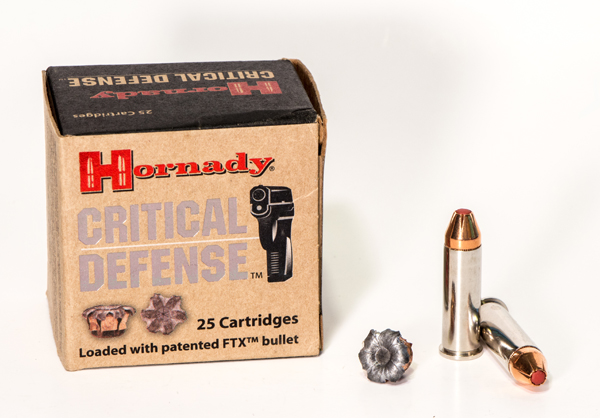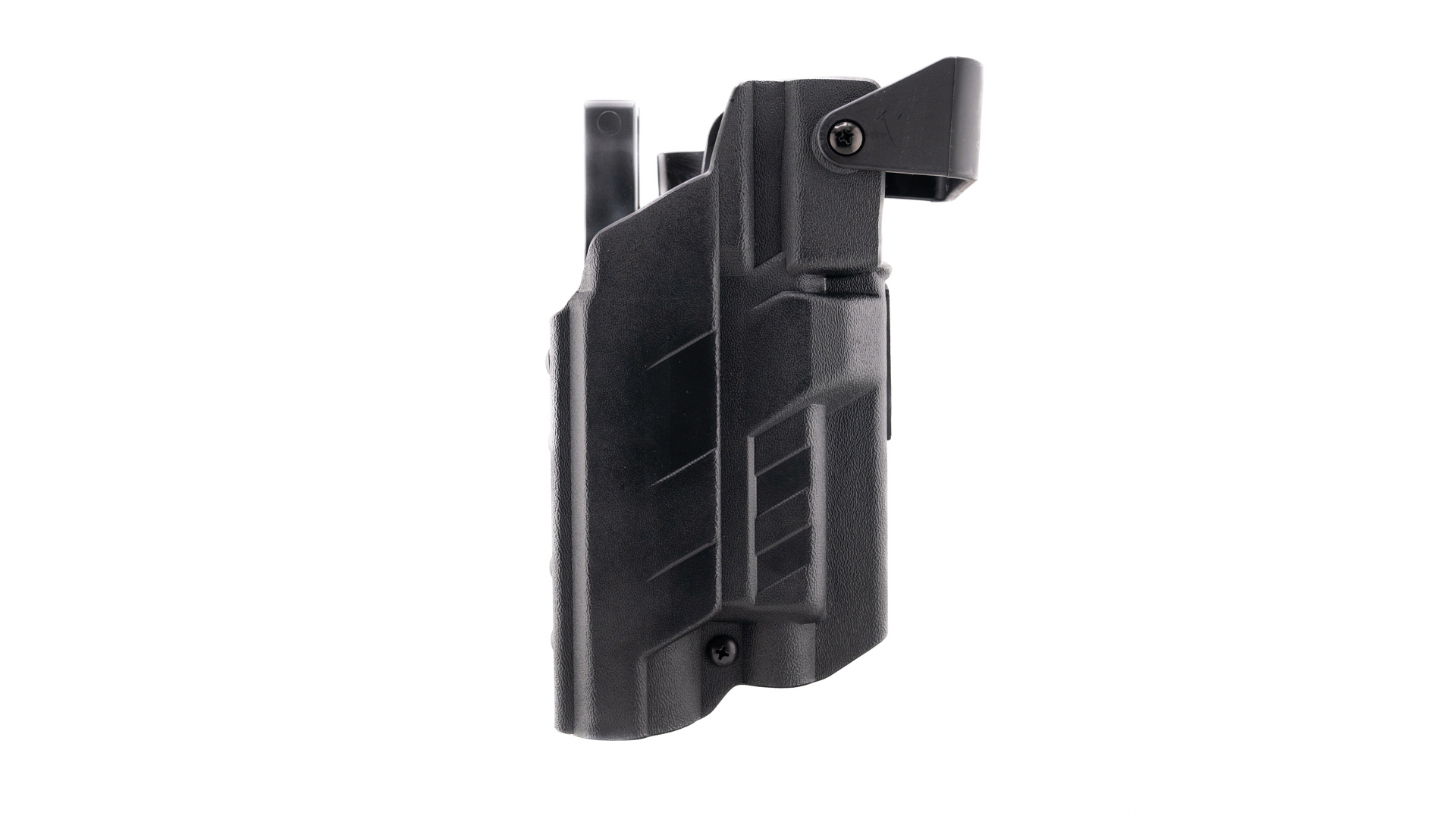
When the question of self-defense with a .38 Special comes up, the first thing we must acknowledge is that any gun is better than no gun. This is partly because no one wants to get shot with any gun, and partly because any gun can serve as a deterrent to violent action, even if it’s never fired. But of course, the question most folks want answered is if a .38 Special is enough gun to stop a violent attack should they actually have to use it.
The Cartridge
The 38 Special was developed by Smith & Wesson at the turn of the 20th Century, and for a long time .38 Special revolvers filled the holsters of more police officers than any other handgun. This, in conjunction with the cartridge’s moderate recoil made it popular with folks looking for a defensive handgun; folks like my Grandpa. My grandfather, a former moonshiner, kept a Smith & Wesson Model 10 close at hand most of his life. I never heard him complain about the inadequacies of the cartridge or wish for something more powerful. He had the money to buy any handgun he wanted, but he trusted the old 38.
The .38 Special fires a .357-caliber bullet and is loaded to an industry-standard maximum average pressure (MAP) of 17,000 psi. Loads designated as +P are available at 20,000 psi, but not all .38 Special revolvers are strong enough for a steady diet of +P ammo. This mostly applies to older revolvers, but some newer 38 Specials are not +P rated. Keep in mind, all .357 Magnum revolvers can chamber and fire .38 Special and .38 Special +P loads safely.
The .357 Magnum is substantially more powerful than the .38 Special, but with it comes intensified recoil and generally, larger and heavier revolvers. This is why the .38 Special remains popular, particularly in snubnose revolvers. Recently, the increased interest in the carrying of defensive handguns has brought us improved munitions for the .38 Special. Here’s a look at eight modern loads that when fired from a snub-nose revolver should deliver the FBI’s minimum of 12 inches of penetration.
Top Loads
Make the comparisons any way you like but I’ve become fond of looking at the crush cavity as a way to evaluate the terminal performance of a defensive handgun cartridge, and that is how these loads are ranked in the included chart. This is nothing more than the size of the hole the bullet might likely create/cut, and it is calculated by using the penetration depth and expanded diameter to establish the amount of tissue potentially destroyed by the bullet. 
Lehigh Defense Controlled Fracture 105-grain +P
This load utilizes a mono-metal bullet designed to shear off three petals during penetration. The idea is that these petals will increase radial wounding, while the base pushes deep. It is a sound concept and the ammunition performs as advertised. However, it is hard to quantify this type terminal performance with numbers and conventional comparisons.
Buffalo Bore .38 Special +P Outdoorsman 158 grain
By using a hard-cast bullet of 158-grains, this load will likely penetrate deeper than any other .38 Special load. It is also likely the best bear defense load you can find for the cartridge. Even though it does not expand, the flat nose bullet does a great job of tissue destruction. It will for sure shoot through any attacker, so overpenetration concerns exist.
Hornady Critical Defense 110-grain FTX
The FTX bullet technology Hornady uses for the Critical Defense ammunition relies on a soft insert in the hollow nose cavity of the bullet in order to prevent the nose from clogging with fabric or other intermediate barrier materials. This soft insert does a good job of initiating expansion, and this load gives good performance with light recoil.
Wilson Combat 140-grain Hornady XTP
This load will not deliver a large crush cavity but, in Hornady XTP bullet fashion, it penetrates very well, with moderate recoil. If you want an expanding bullet that will penetrate very deep, this load is likely one of the best options.
Remington 125-grain Golden Saber +P
Golden Saber ammunition seems to perform well regardless of the chambering, and the .38 Special +P 125-grain load from Remington is no exception. With regard to conventionally styled, lead core, hollow point bullets, the Golden Saber expands very wide, maybe the widest in this chambering. Of course, with wide expansion always comes a reduction in penetration.
Speer 135-grain Gold Dot Short Barrel
This is very likely the best load commercially offered load for short-barreled .38 Special revolvers. It does a great job of balancing expansion with penetration, without excessive recoil. Additionally, Gold Dot ammunition has a stellar reputation with law enforcement agencies.
Buffalo Bore 110-grain Barnes Tac-XP (Standard & +P)
If, like me, you believe crush cavity size matters, then without question both the standard pressure and +P, 110-grain Buffalo Bore .38 Special Barnes TAC-XP Short Barrel, Low Flash loads are at the top of the list. Both delivered the largest crush cavities of any load tested. However, the recoil of the +P load, which is the better of the two, is a bit stiff from compact revolvers.
Mann's Pick
If I was looking to carry a .38 Special for personal protection, I would probably opt for one of the Ruger LCR revolvers chambered in .357 Magnum. It only weighs a few more ounces than the .38 Special version, but will handle a steady diet of +P loads better. And, of course, it would offer the option of .357 Magnum ammo. What load would I suggest? Buffalo Bore’s + P 110-grain Barnes Tac-XP Short Barrel Low Flash.
Table 1: Terminal Performance Test Data
| Load | VEL | PEN | RD | RW | CC |
| (fps) | (inches) | (grains) | (cu.in.) | ||
| Lehigh Controlled Fracture (CF) 105 grain +P | 1,041 | 18+ | 0.36* | 62 | 1.83 |
| Buffalo Bore .38 Special +P Outdoorsman 158 grain | 962 | 18+ | 0.36 | 158 | 1.83 |
| Hornady Critical Defense 110 grain FTX | 757 | 13.5 | 0.49 | 110 | 2.54 |
| Wilson Combat 140 grain Hornady XTP | 889 | 18 | 0.43 | 140 | 2.61 |
| Remington 125 grain Golden Saber +P | 883 | 13 | 0.57 | 125 | 3.31 |
| Speer 135 grain Gold Dot SB | 865 | 14.5 | 0.55 | 134 | 3.44 |
| Buffalo Bore 110 grain Barnes Tac-XP SB/LF | 966 | 12.5 | 0.6 | 110 | 3.53 |
| Buffalo Bore + P 110 grain Barnes Tac-XP SB/LF | 1,048 | 16.5 | 0.54 | 110 | 3.77 |
| Averages | 926 | 15.5 | 0.49 | 118 | 2.86 |
NOTES: Velocity (VEL) was established by firing each load through a Shooting Chrony chronograph positioned directly in front of the block of 10-percent ordnance gelatin at a distance of 10 feet. Penetration (PEN) was measured from the front of the gel block to the furthest point of penetration. Recovered diameter (RD) was measured across the front of the bullet at the widest and narrowest point, and the average is listed. The listed recovered weight (RW) is that of the recovered bullet or the largest piece of the recovered bullet when a bullet fragmented. * Indicates fragmentation. SB=short barrel. LF=Low Flash






































